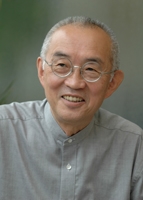Discovering what generative AI cannot do Tsukio Yoshio (Professor Emeritus, University of Tokyo)

In 2011, a professor at Duke University stated that “When today’s children graduate from university, 65% will work in jobs that do not exist in today’s society.” The following year, the director of the Da Vinci Institute announced that “In the next few decades, 2 billion jobs, equivalent to half of the jobs that exist on Earth, will disappear.” These were kind of prophecies, but research has been published that clarifies them.
In 2013, two scholars from Oxford University published a study titled “The Future of Employment: How will computers affect the future of jobs?” which calculated the probability that approximately 700 existing jobs will disappear from society (although there is no limit to the number of years), and the disappearing jobs that had a 1% probability of survival, such as watch repair, information research, and tax processing, became a hot topic.
Furthermore, in 2017, scholars from the United States and the United Kingdom published a study titled “When artificial intelligence surpasses human capabilities,” which estimated the time when artificial intelligence will replace various jobs.
His prediction that manuscript reading and machine translation would be replaced in the mid-2020s proved correct, but the most shocking prediction was that most jobs in today’s society would be replaced by artificial intelligence by 2060.
There have been many incidents in the past where the emergence of innovative technology has destroyed the existing structure of society. A famous riot in history was the Luddite movement that occurred in England in the early 19th century, when people rebelled against the automatic loom invented in the late 18th century as the cause of mass unemployment among workers, stormed into textile factories around the country and destroyed the machines, escalating into riots that required the military to be deployed.
This was an incident in the secondary industry, but in today’s developed countries that have transitioned to an information society, it is easy to predict that riots will occur in the tertiary industry. In fact, there are already signs that the advancement of artificial intelligence will replace the jobs of a large number of people who have been engaged in the tertiary industry. This is not limited to clerical work, but is spreading to creative work such as art.
In fields with rules, such as shogi and go, even human masters have been defeated by artificial intelligence since the mid-2010s, and generative AI has begun to make inroads in fields without rules, such as writing novels and creating paintings. Kudan Rie, the winner of the 2023 Akutagawa Prize, made headlines when she announced that about 5% of the text in her winning work was created by AI.
Furthermore, an American science fiction magazine found that many of the submitted works were created by generative AI, and stopped accepting submissions from the general public. Midjourney, a generative AI specialized in generating images, can create stunning paintings in just a few minutes by simply entering a few keywords, and the realm of art, which was once considered the domain of humans, is beginning to be eroded.
Dealing with this difficult problem will be an important issue in the future. Since the focus of industry during the Luddite movement was secondary industry, the problem disappeared for the time being as the focus of industry shifted to tertiary industry. However, it is higher-level activities that will solve the problems facing the tertiary industry, which is the center of modern society. Exploring what it is will be the center of human activity in the future.
※Translating Japanese articles into English with AI
